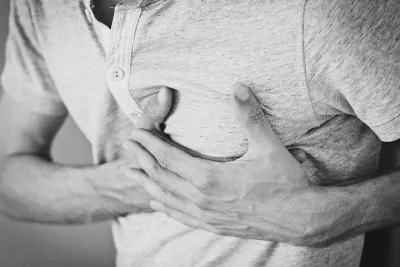Are Hollywood Heart Attack Portrayals Misleading?

Synopsis
Key Takeaways
- Hollywood's portrayal of heart attacks is misleading.
- Symptoms can be subtle and often misinterpreted.
- Delays in seeking help can lead to severe consequences.
- Both men and women can experience similar symptoms.
- Education on heart attack signs is crucial for public health.
New Delhi, July 13 (NationPress) Beware of the way Hollywood depicts heart attacks, as researchers caution that the image of individuals dramatically clutching their chest and collapsing is a misrepresentation that should not be anticipated. Ann Eckhardt, a nursing professor at The University of Texas at Arlington, stated, ‘The Hollywood Heart Attack’ is unfortunately far from real life.
“Experiencing a heart attack is not always accompanied by intense symptoms. Often, it manifests as a feeling of discomfort that doesn’t seem quite right, leading many to postpone seeing a doctor. The longer the delay, the higher the risk of facing severe consequences after a heart attack,” Eckhardt explained in an article published in the journal Heart & Lung.
Eckhardt and her team are working diligently to correct public misconceptions regarding chest pain and heart attack symptoms.
The researchers found that many individuals do not encounter the dramatic portrayal of heart attacks that is typical in films. Instead, symptoms are frequently subtle and multifaceted. Another common misconception is the belief that heart attack symptoms significantly differ between men and women.
“Traditionally, we said men experience typical symptoms while women have atypical ones,” Eckhardt remarked. “We are striving to eliminate that language. The predominant symptom for both genders is related to the chest. Our previous categorization contributed to confusion.”
Transforming public perception is challenging, but it’s a mission that motivates Eckhardt and her colleagues. Three years ago, she helped create the Chest Pain Conception Questionnaire to gauge how the general public perceives heart attacks.
The study indicated that nearly 75% of participants had learned about heart attacks from television or films, underscoring the necessity for clearer, more precise educational resources regarding chest pain and its associated symptoms.
“We frequently inform individuals that chest pain is a sign of a heart attack, yet we fail to specify what they might actually experience,” Eckhardt stated. “For many, it doesn’t feel like pain in a conventional sense; it’s often discomfort, pressure, or tightness. They may not feel quite right, but they struggle to identify the sensation.”
This uncertainty often leads to delays in seeking medical help.
“The longer the wait, the greater the chance of sustaining irreversible damage to the heart,” Eckhardt cautioned. “By understanding public perceptions of heart attack symptoms, we can assist the medical community in better evaluating patients. It’s not simply about asking, ‘Are you feeling chest pain?’; it’s also about inquiring, ‘Do you sense any discomfort, pressure, tightness, or squeezing?’”










